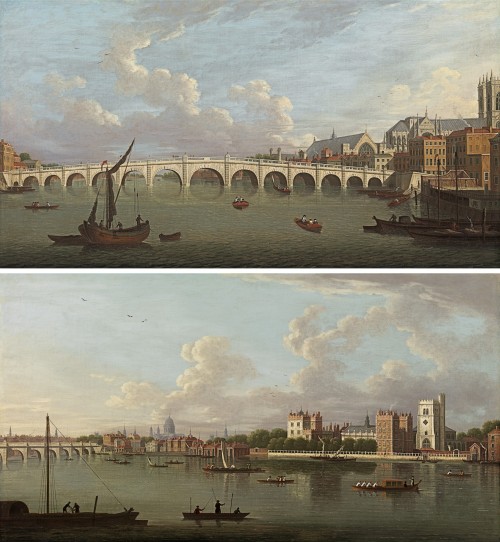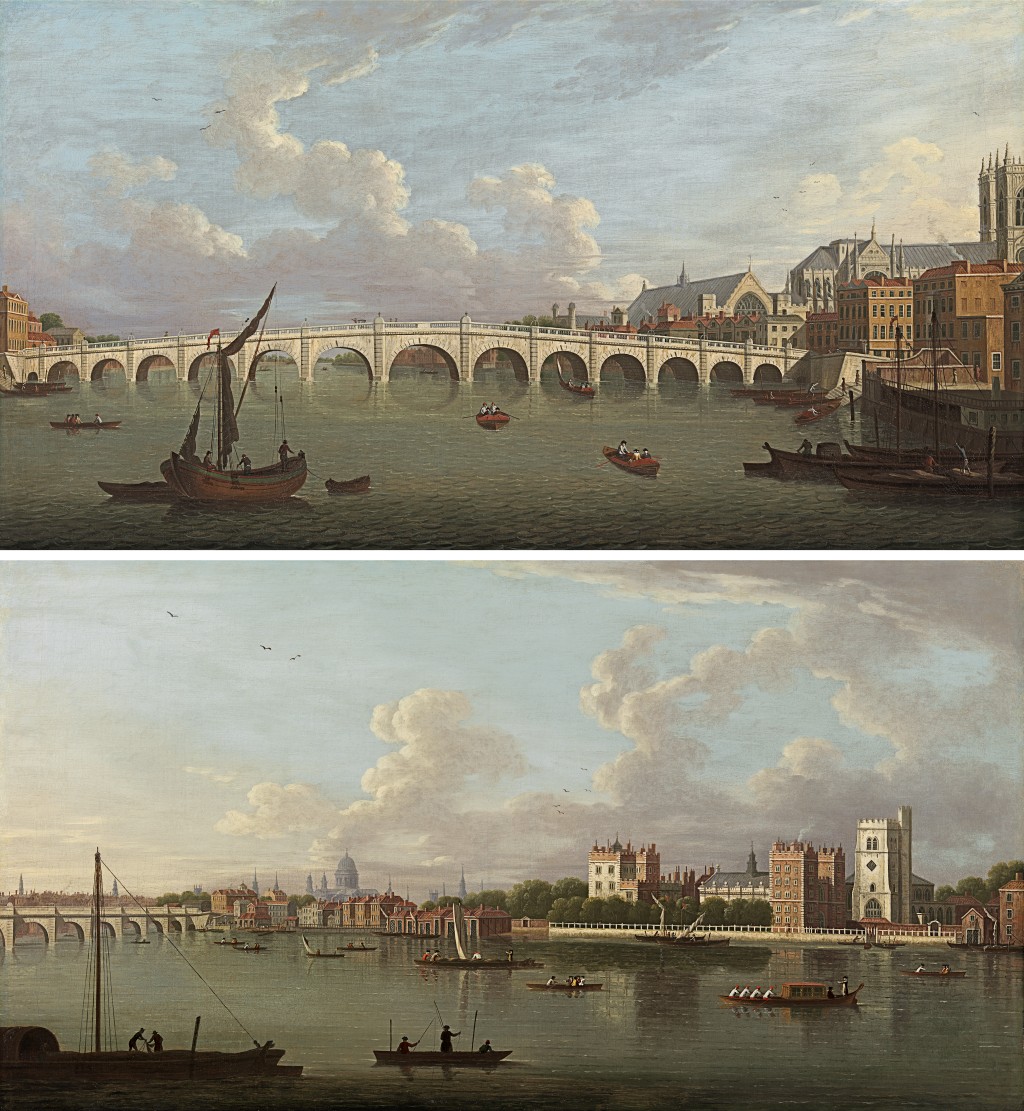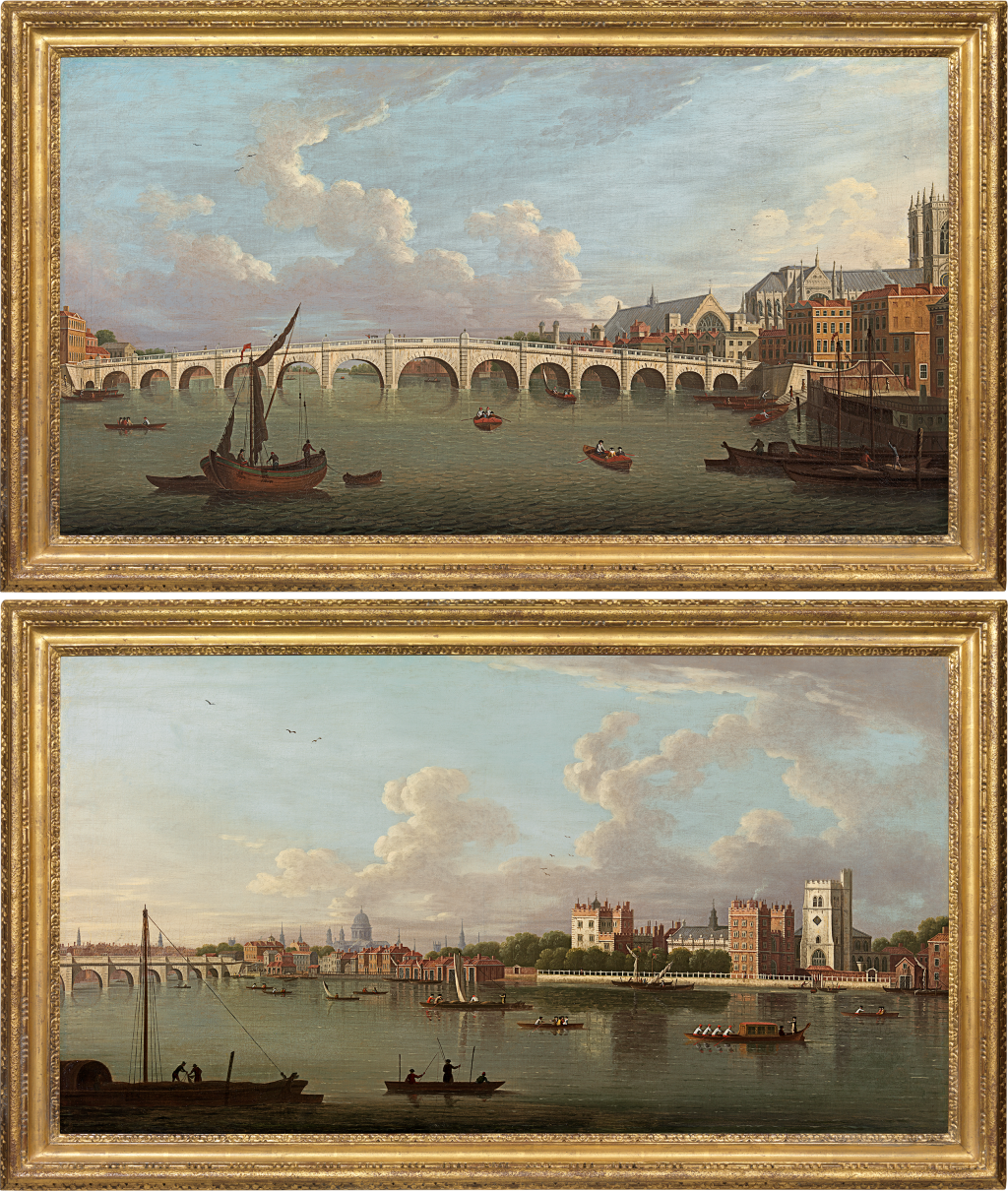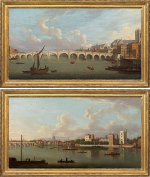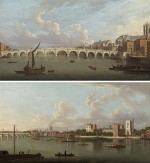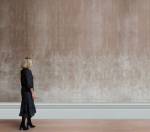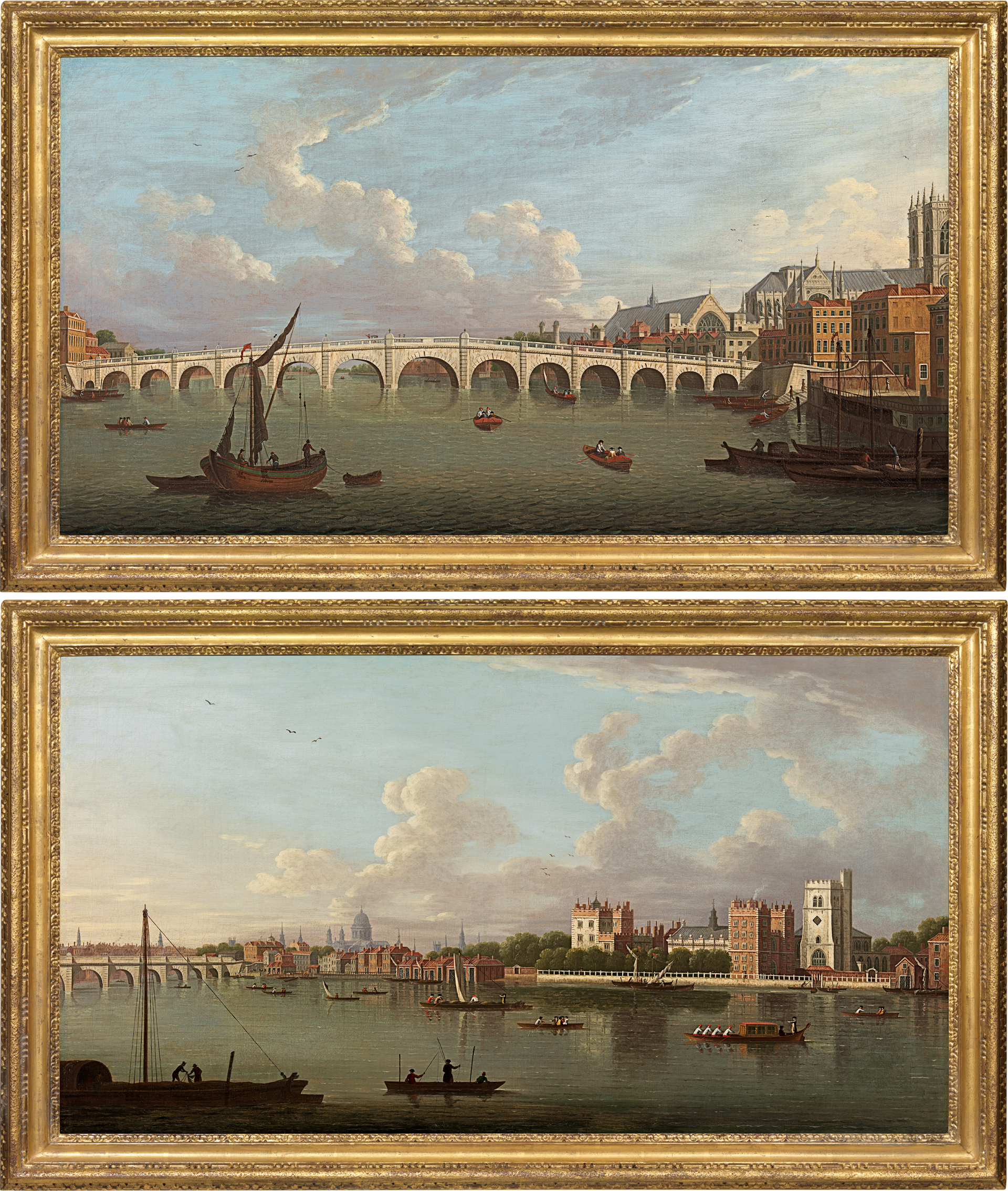JOSEPH NICKOLLS
fl. 1726 - 1755
Ref: CB 224
Westminster Bridge,Westminster Hall and Westminster Abbey; Westminster Bridge and Lambeth Palace, looking south-east
Oil on canvas: 24 x 44 in / 61 x 111.8 cm
Frame size: 28 ¼ x 48 ½ in / 71.8 x 123.2 cm
A pair
Painted circa 1755
Provenance:
Spencer Stanhope family, Cannon Hall, Barnsley, Yorkshire;
by descent in a private collection, UK
Painted views of London became increasingly sophisticated in the eighteenth century, in response to the growing prosperity and confidence of the capital. Joseph Nickolls was painting London views from at least the 1730s, but the genre was given added impetus by the presence in the city of the Venetian view painter Antonio Canaletto (1697-1768) for nine years from 1746. Canaletto came to London with the benefit of his celebrity among aristocratic patrons who had acquired his Venetian views on their Grand Tours. The clarity of his treatment of light and the precision of his depiction of buildings undoubtedly had great influence on British painters of London views, who found an increasing market for their own works.
Westminster Bridge and Lambeth Palace, looking south-east
This view shows, to the left, the new Westminster Bridge, designed by Charles Labelye and opened in 1750. If the City was the financial powerhouse of London, Westminster, to the west on the north bank of the Thames, was its political centre. Many new mansions were built along its shore in the seventeenth and eighteenth centuries, among them the Duke of Richmond’s seat, Richmond House (c.1660), the subject of a painting by Canaletto. Until Westminster Bridge was erected, the river could only be crossed at Putney Bridge (in the west) or London Bridge (in the east); it was necessary otherwise to take a boat or use the horse ferry.
In the right-hand side of this painting, on the south bank, is Lambeth Palace, the official residence of the Archbishop of Canterbury, the senior cleric in England, since the thirteenth century. The red brick Tudor gatehouse is flanked to its left by the Great Hall and to the right by the church of St Mary-at-Lambeth. In the distance can be seen St Paul’s. The craft on the river are a reminder of how important boat travel continued to be. In the right foreground is an elegant barge with a covered cabin, the property of an aristocrat or rich merchant. Elsewhere, Thames Watermen ply rowing boats for hire and cargo vessels skim the water.
Westminster Bridge, Westminster Hall and Westminster Abbey
This painting shows the full extent of Charles Labelye’s Westminster Bridge, its dazzling Portland stone rivalling the bridges of Rome or Venice. The view is similar to that adopted by Canaletto in Westminster Bridge from the north with the Lord Mayor’s Procession, 1746-47 (private collection)[1]. The emphasis here is on Church and State. At far right is Westminster Abbey, chief focus of Royal ceremonial and the place where Kings of England have been crowned since the reign of William the Conqueror in 1066. To the left of the Abbey is Westminster Hall, eleventh century in origin, with a famous fourteenth century hammer-beam roof. It was used as a banqueting hall, for early parliaments and housed the Law Courts. The Hall is the only part of the ancient Palace of Westminster that survived the fire of 1834. Just visible to the left of the Hall is the Royal Chapel of St Stephen, which was secularized at the Reformation and became the meeting place of the House of Commons until it too burned down in 1834.
Note on the provenance
These paintings formerly hung at Cannon Hall near Barnsley in Yorkshire, seat of the Spencer Stanhope family. The Cannon estate was bought by a Welshman, John Spencer, in 1660. The Spencers prospered in the iron and coal industry and in the eighteenth century another John Spencer built the mansion of Cannon Hall. This was enlarged by the renowned architect John Carr of York in 1764-68, with elegant interiors, a magnificent library and furniture by Thomas Chippendale. Nickolls’s views of London are very much in accord with the taste of this era, although it is not known whether they were acquired by John Spencer, or a later member of the family. John Spencer’s sister married Walter Stanhope and his nephew inherited Cannon Hall, taking the name Spencer Stanhope. The paintings have descended in the Spencer Stanhope family.
JOSEPH NICKOLLS
Fl. 1726 - 1755
Despite his sophistication as a topographical painter, nothing is known of Joseph Nickolls’s life. He specialised in London views and also worked as an illustrator, for example illustrating Captain Charles Johnson’s General History of the Lives and Adventures of the most Famous Highwaymen, Murderers, etc. (1734).
Nickolls was producing subtle views of London, with delicately-painted figures, at least a decade before the arrival of Canaletto in England in 1746. A pair of paintings of The fountain in the Middle Temple (signed and dated 1738; collection of the Middle Temple) and The Stocks Market were engraved in 1738. A view of St James’s Park and the Mall, circa 1745 (Royal Collection) has also recently been attributed to Nickolls (see London, Tate Gallery, Manners and Morals: Hogarth and British Painting 1700-1760, ed. E Einberg, pp.130-133). In 1746 Nickolls painted A view of Charing Cross and Northumberland House (National Westminster Bank plc). Nickolls’s painting of Pope’s Villa, Twickenham is in the Paul Mellon Collection.
[1] See Yale Center for British Art/Dulwich Picture Gallery, Canaletto in England, 2006-7, pp.100-102, no.23, illus. in colour.

